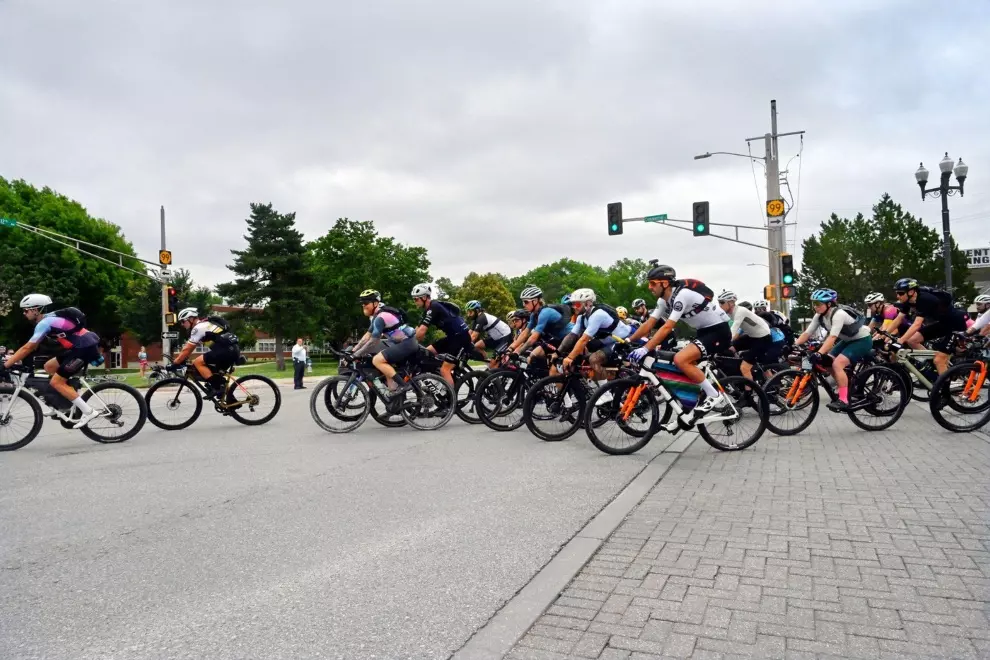Richard Gasperotti recalls one trip with a 6-rider group to British Columbia. A seaplane dropped them off at Spruce Lake located in the wild Canadian backcountry. The plan was to ride 100 kilometres back to the civilisation. It usually takes two days to cover that distance, with an overnight stay by another lake. Before dusk, all backpacks are encouraged to be hoisted up a tree for safety reasons.
A client that neglected to do so woke up in the middle of the night to strange sounds. After switching the headlamp on, he faced a bear ripping through his backpack. When the bear realised it has been spotted, it disappeared into the woods. The client has never seen his backpack again. “He lost almost everything,” says Richard Gasperotti. “Even for less dramatic situations, I always take extra things in my backpack that I can share with clients in case something is missing – be it food, drinks or even spare clothes,” says Richard.

To make sure he doesn’t get lost with the group, Richard never relies solely on online navigation on his mobile phone. Unlike most of us, Richard downloads an offline map to his phone before he departs. On top of that, he carries a paper map with handwritten emergency contacts.
In inaccessible areas or big mountain ranges like in Canada, Azerbaijan or Mongolia, he also carries a satellite phone in case something unplanned happens outside of the GSM coverage. A powerful power bank might help to charge up to seven phones.
While travelling to Austria, one of Richard’s clients broke his femur in an accident. To avoid the shock of hypothermia, Richard kept him warm until the helicopter came just by wrapping him in a thermal insulation foil. ”A golden thermal insulation foil paid off many times over as it offers a truly versatile use,” Gasperotti says. When the weather suddenly changes and the temperature drops dramatically, the foil comes in handy as an extra layer. “It can be a matter of life and death in cases of hypothermia-related injuries or if we have to stay somewhere unexpectedly overnight. Wrapping yourself in it is like being in an improvised sleeping bag.” The thermal insulation foil is folded into a small package but when unfolded, it offers a large surface that might serve as a sterile pad when treating an injured rider.
Richard always carries a first-aid kit with basic first-aid supplies. In addition to bandages, dressings and plasters, he uses kinesiology tapes for application on injured or problematic muscles and joints. He also has surgical sutures for cases when it’s impossible to fix lacerations just by using strips. “Once in Morocco, I stitched my own chin that I cut after the crash,” Gaspi says. The nearest doctor was about 3 days’ ride away.
An elementary toolkit is a significant part of the gear, too. With a basic tool, a semi-experienced mechanic can fix the most common failures. In addition to the basic wrenches, Richard appreciates a multitool with a good pair of pliers and tool bits. Many things can be solved using strips or tape, though. Instead of heavy duct tape, Richard bets on a narrower tape intended for electricians as it works similarly and weighs far less. In addition to tools, Richard recommends putting spare parts like a chain connector, extra inner tubes, brake cables, etc. into the backpack.
And what backpack size is big enough to do the job? The optimum size for a guide’s backpack is between 15 and 20 litres. Richard chose a backpack size that enables him to carry stuff not only for himself but also for his clients. Every guide has different priorities and likes a different design. “I’m used to wearing a backpack designed by myself and produced by the Czech company Acepac. Its advantage is that it has a variable size that can be expanded from 15 to 20 litres by using two simple straps,” Richard says.
A wrap-up tip: a resealable plastic bag proved to be a simple, lightweight, yet handy tool. It weighs almost nothing, and in a case of a downpour, it can store delicate electronics like cell phones.




